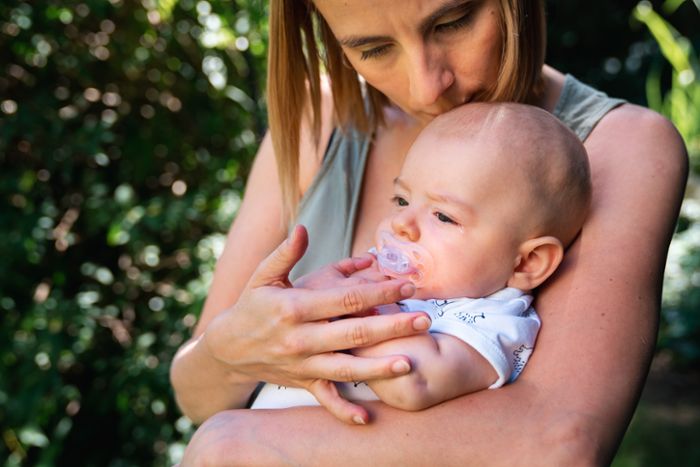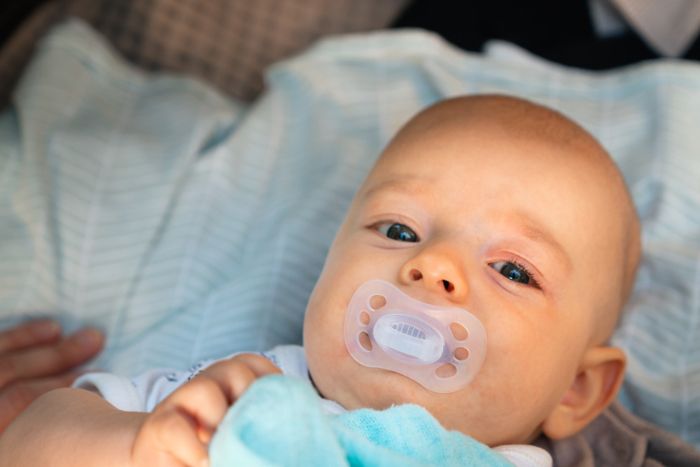Only the best for your babies. To help you introduce a dummy in a healthy and positive way, we gathered useful advice and inputs.
When babies are agitated, showing signs of discomfort, it can be heartbreaking. As parents, you will move mountains to comfort our little ones. If simply cradling and rocking doesn’t seem to help, a dummy may be a soothing solution – whether he or she is a newborn, three months old, or even six months old.

How do you introduce babies to a dummy? When should you give a newborn a dummy? These are questions that may concern you. You want only the best for your baby and to make the right choices for him or her. To help you introduce a dummy to your baby in a healthy and positive way, we gathered some valuable advice that you may find helpful.
Keep reading to find out when to start giving your little one a dummy and the techniques to help your baby accept their dummy, and advice for encouraging calm and self-soothing with the assistance of a dummy.
When is the best time to start giving a dummy to your baby?
Dummies can be given from birth to any age, you can even start giving your little one a dummy if he or she is already three or six months old. With many shapes and designs, there are even dummies that are specially developed for newborns, like our NEWBORN dummy, shaped to accommodate their tiny mouths and to protect their sensitive skin.
If you are breastfeeding your newborn, you may choose to wait and introduce a dummy after your baby has learned to latch correctly and breastfeeding is well established between you two. Studies have shown that the use of a dummy in healthy breastfeeding babies, started from birth or after lactation is established, did not impact significantly the frequency or duration of exclusive and partial breastfeeding up to four months of age.1
With that in mind, it is recommended to hold the use of the dummy when it is close to the feeding time and not to use the dummy as a mechanism to delay the feed. Instead, when your baby is giving you cues that they are hungry, enjoy this feeding moment to hold your little one in your arms and engage in the magical bond that unites the two of you.
Whatever timeline you prefer to follow, keep in mind that each baby is unique and may react and adapt differently to this new experience being introduced into their life.

So, how can I get my baby to take a dummy?
Every baby has their own preferences and rhythms, and introducing a dummy is no different. Try the following steps when helping your little one discover a dummy for the first time:
- Be sure to thoroughly clean and sterilise the dummy before it is introduced to your baby.
- Hold the dummy, and gently touch the skin around your baby’s lips and cheeks with the teat. Allow your little one to feel the dummy’s material against their skin. This will help trigger the rooting reflex and your baby will turn their face towards the stimulus.
- Observe your baby’s behavior. If your little one opens the mouth, it means that they are searching for something to suckle on. Place the dummy gently on the lower lip or the front part of the tongue, and wait for the suckling reflex to start.
- If the first introduction is successful, your baby will eventually begin to explore and suckle on the dummy.
Of course, be gentle with your baby and don’t force the dummy as this may cause a negative response. If it seems as though your little one is rejecting the dummy at first, it’s instead often an indicator that he or she just needs more time to explore and discover. Give your baby plenty of time to learn, explore new feelings and sensations, and become familiar with their dummy on their own terms. You’ll know as your baby begins to enjoy suckling the dummy – for example, you’ll see it from their content expression and calm behavior.
Like all people, your baby has individual preferences and interests, and you may even find that he or she doesn’t want a dummy. By carefully observing their reaction upon introduction, you can make the determination as to whether your baby is ready for a dummy – and he or she will likely let you know, too.
Discovering the dummy is a learning experience. Your little one will learn all about it through their senses and by using their tongue, lips, and natural suckling instincts to explore with this brand-new object. In time, they will likely perceive and recognise their dummy as a pleasant object that allows them to suckle, relax, and perhaps even calm themselves.
References
- Jaafar SH et al. Effect of restricted pacifier use in breastfeeding term infants for increasing duration of breastfeeding. Cochrane Database Syst Rev. 2016; (8):CD007202. https://www.cochranelibrary.com/cdsr/doi/10.1002/14651858.CD007202.pub4/full






















